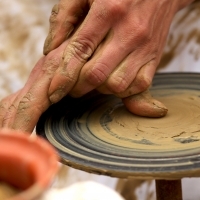Learn to Use Your Creativity for Problem Solving

Creativity, the ability to make new things or think of new ideas, is something we value. Established best practices, such as patterns, can help us solve many problems efficiently, but breakthroughs arise from creative solutions.
There are number of common beliefs about how to encourage creativity, but some of these beliefs may be wrong, as Gwen Moran explains in her discussion of Christian Stadil and Lene Tanggaard's forthcoming book, In the Shower with Picasso.
Moran lists four myths about creativity that may not be accurate. In particular, thinking outside the box and working harder on solving the problem may not always lead to the best or most creative ideas. Creative ideas can come in a variety of environments, not just those that one would consider "inspirational places."
Offering reassurance to those struggling to solve problems, Moran says that "Geniuses produce a lot of crap before they get to the good stuff." Marc Barros, in Inc. Magazine, suggests that familiar agile principles—limiting meetings to a daily standup, giving plenty of feedback, and focusing only on large-scale business goals—can help. Some of his other suggestions, such as allowing remote work and unlimited vacations, aren't related to agile per se but do align with agile values of trusting team members.
A recent article in The Boston Globe further illustrates the fickleness of the creative process. Dr. Charles Vacanti attributed his successful discovery of a new process to create stem cells to a lack of knowledge of the dogma in his field. The flip side was that it was that much harder for his ideas to gain traction in the community.
The results from his experiments were hard to ignore. An agile team could consider this story as an example of why a spike solution might help resolve a technical issue where the team does not agree on an approach.
If being creative is a hard thing to do, it is an even harder thing to understand; there is even an academic discipline of creative studies for those wanting to learn more about the concept. Such programs seek to understand and explain how creative solutions arise, treating creativity less like magic and more like a skill.
Being a good problem solver is a balance between the novel and the familiar. Don't necessarily value creativity over tried-and-true solutions. Novel approaches often work well, but best practices really are the best in some domains and in appropriate situations.
There may well be no set of approaches that guarantee a creative solution on a specific timetable, but there are skills and techniques that can help you solve problems creatively. Sometimes, as Gwen Moran points out in her Fast Company article, it can be something as simple as stepping away from the problem.
When are you most creative? What do you do when you are stuck on a problem? Tell us in the comments below.

